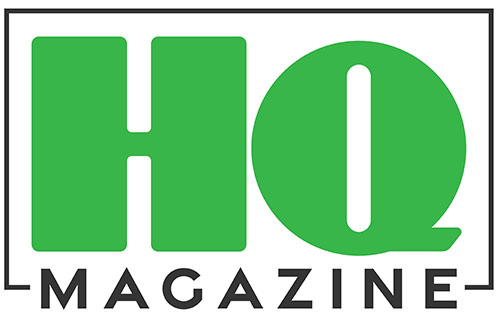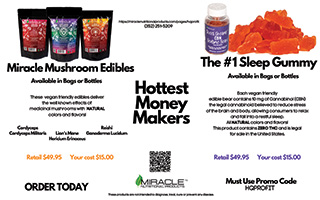Sipping the NoLo Way: A Beverage Revolution?
By Matt Weeks
Alcohol had a good run. For 9,000 years, it’s been humanity’s go-to drug of choice, living at the center of our cultures—embedding itself in our religions, our healthcare, our self-medication, and our free time. But all that might be in the past.
Alcohol conquered every mountain with promises of escape, high spirits, and pain relief. But that seems to have stopped working sometime last year. That’s when the $2 trillion global alcohol industry found itself under siege by so-called NoLo (no and low-alcohol) beverages.
The best way to gauge any fundamental shift in consumer behavior is to watch the elites. For example, there was no clearer omen forecasting the decline of cigarettes than when Altria (formerly Philip Morris) bought Juul. So, when Anheuser-Busch InBev, the makers of Bud Light, announced its NoLo line will make up one-fifth of its sales by 2025, there was only one conclusion to draw; they saw the writing on the wall the rest of us may have missed. Quick on their heels, every major brewery has since stepped into the NoLo market in some form.
The International Wine and Spirits Record (IWSR) pegged the global NoLo market at north of $11 billion in 2022 and expects it to grow at 9 percent a year through 2026 (even more in United States). The biggest beneficiaries so far are beer alternatives like Heineken Non-Alcoholic and Athletic Brewing’s NA IPA. But the trend has also further opened the door for beverages featuring kratom, CBD, functional mushrooms, and other supplements believed to promote clarity and relaxation.
Now, with Sober October just beginning to slide into the rearview, it’s easier than ever to see why head shops and dispensaries are making big money off bottles and cans.
But what’s driving the shift away from a centuries-old practice?
The Anxiety Economy
When Kramer from “Seinfeld” disguised himself as a drug-addled party boy, he summed up the parody by exclaiming, “Here’s to feeling good all the time!” The audience of the 1990s understood the line as a joke about excess. Certainly, only someone under the sway of illegal substances could believe in feeling good all the time.
But present the same line today, and it will land differently. Out of context, modern consumers are more likely to view the exclamation as the slogan for a health supplement or the motto of a yoga app than as a reference to illicit party favors.
Many Americans not only wish they could feel good all the time; they see it as an attainable goal. But today’s idea of permanent bliss requires cutting out hard drugs, not doing more of them. The 2023 wellness industry asks us to believe that if we’re not feeling happy and healthy, it’s a simple matter of correction.
And nothing did more to convince us of our own deficits than Covid 19.
The pandemic spawned a seismic mental health reckoning; a kind of mass Moment of Clarity born of a mass hangover. From March to September 2020, alcohol usage spiked 20 percent over the previous year, according to a study from Columbia University. Sales stayed strong through 2021, with 60 percent of adults admitting to drinking more than ever. But as normalcy returned, Americans looked at themselves in the mirror and couldn’t believe what they’d become.
Because we’re not a country that lets a crisis go to waste, we responded the best way we know how: by developing new products to buy. If our daily lives were producing more anxiety than ever before, the market would produce more cures.
Suddenly, meditation apps flourished. Bookstores began to notice a shift in self-help purchases. Tomes that dominated the before-time, like Rachel Hollis’s “Girl, Stop Apologizing” and “Awaken the Giant Within” by Tony Robbins, suddenly seemed cute and unserious against our post-pandemic superstars like The Myth of Normal: Trauma, Illness and Healing in a Toxic Culture and The Subtle Art of Not Giving a Fuck. Where we once sought help to conquer the world and maximize our success, we were now searching for ways to simply exist without pain.
Fresh off a two-year bender, modern consumers have stopped looking for a way to deny the uncertainty in their lives. Instead, they have begun searching for a way to accept it.
Enter the wellness beverage market.
Talkin ‘Bout Dry Generation
While every consumer demographic reports an urge to curb drinking, the effect is most pronounced at the lower end of the age curve—the same groups that identify most heavily as pro-cannabis, pro-CBD, and pro-herbal supplements.
Generation Z drinks less than Millennials did at their age, who drink less than Gen Xers, who drink less than Baby Boomers. Health experts like to credit this decline to increased public education about the dangers of alcohol, but it’s just as likely that Zoomers are imbibing at a lower rate (and having less sex) because they hang out less than earlier generations.
While Boomers had their malt shops, Gen Xers met at the mall, and Millennials had parking lots, teens today get their kicks online. Nobody needs to show up at “the spot” or sneak into a party in the hopes of running into their crush. Posting a thirst trap to TikTok works just as well.
Just as importantly, modern parents expect to know where their kids are at every moment of the day. The days of the big, secret high school blowout have been on the decline since American Pie had a wedding. And, as any parent can attest, it’s harder for kids to make bad decisions when they have less access to bad influences.
More than that, Generation Z is simply built differently. Even when younger folks manage to meet up, it’s not the same. As one 19-year-old bluntly put it, “Whenever we get together, everybody’s on their phones.” Zoomers are the first generation to grow up completely within the internet age, which makes them hyper-aware of their online image. While Gen Xers could forget a drunken night, Gen Z realizes they have to live with the evidence forever.
Why Are You Booing Me? I’m Right
The good news is that the trend toward NoLo beverages and cannabis drinks is a positive step forward. They leave us healthier and happier than alcohol does. They don’t lead to aggression or poisonings or liver failure. They show real promise in relieving anxiety, along with inflammation.
And, before you start thinking about Prohibition 2.0, these drinks are not perfect replacements. Eighty-two percent of consumers who buy NoLo products also drink the hard stuff.
They just want a break sometimes. For health reasons.
Obey Their Thirst: 5 Booze-Free Bevies for Your Sober Socialites
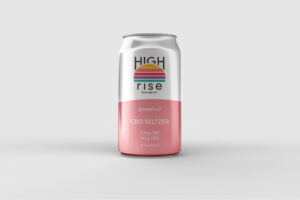
Experience the vibrant range of High Rise CBD Seltzers, featuring Grapefruit, Lime, Black Cherry, and Blackberry. Each flavor blends high-quality hemp-derived CBD and CBG with North Carolina spring water for a multi-layered wellness experience. With a focus on quality ingredients, these seltzers offer a unique alcohol-free option for holistic relaxation and revitalization.
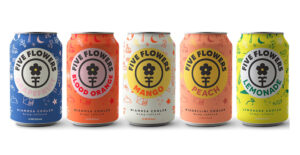
Five Flowers offers a unique twist on sparkling beverages, designed to elevate any brunch or outdoor adventure. This hemp-derived thirst quencher comes in five flavors: lemonade, grapefruit, peach, mango and blood orange. Each serving contains 5mg of Delta-9 THC and 5mg of CBD, ensuring a consistent, low-dose experience. Best served cold, Five Flowers’ hemp-infused Miamosa Coolers promise rapid onset for maximum relaxation.
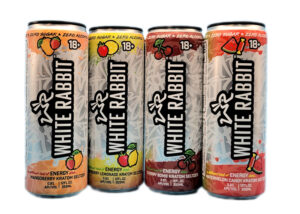
Discover the next level of clean ‘zenergy’ with White Rabbit Kratom Seltzers. Zero sugar, alcohol, calories, or caffeine—just pure deliciousness, plus potent Mytragynine in a nano-emulsion, offering 25x better bioavailability for a uniquely uplifting buzz. Kratom and flavor and bubbles! Oh My!
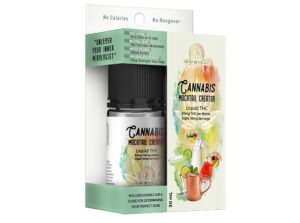
Mixology meets cannabis innovation with HempBevCo’s Cannabis Mocktail Creator. Elevate any drink using fast-acting, water-soluble THC—no bitterness included—with a neutral flavor profile to fit any concoction. Designed for adults 21+, this potential game-changer delivers customizable doses for a healthier, alcohol-free buzz you’ll feel in just 15 minutes. Cheers to the future of relaxation!
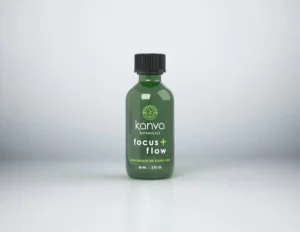
Kanva Botanicals’ Focus + Flow offers a meticulously crafted blend of Kava and Kratom extracts. Ideal for mocktail mixers, just one or two teaspoons in your preferred drink can elevate mood and focus while providing sustained energy. Each 2 oz bottle is lab-tested for purity and potency, offering a convenient avenue for those pursuing natural wellness
